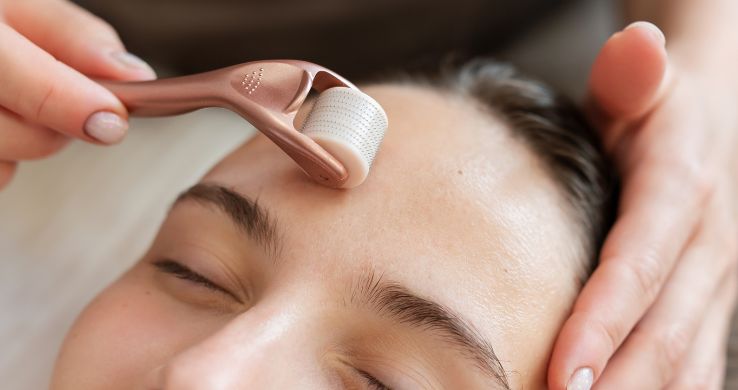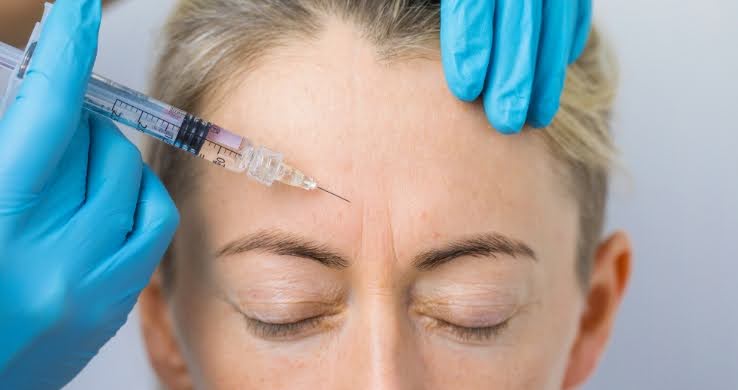Botox, a purified protein produced by the bacterium Clostridium botulinum, is now famous as a cosmetic procedure, but its history is lesser known. For decades, Botox has been used for therapeutic purposes, and in recent years, it has become a popular non-surgical cosmetic treatment for reducing wrinkles and fine lines. This blog post provides a comprehensive overview of the history of Botox, tracing its journey from a therapeutic drug to a cosmetic superstar. Here, we explore six key milestones in the history of Botox.
Discovery
The discovery of Botox has a fascinating history that dates back to the early 19th century. German physician and researcher Justinus Kerner played a crucial role in the study of a deadly botulism outbreak (1). Through his research, Kerner identified the toxin responsible for the outbreak and named it “botulinum toxin.” Fast forward to the late 1960s when Dr. Alan Scott, an ophthalmologist, made a groundbreaking discovery. He found that the muscle weakness induced by botulinum toxin could effectively treat strabismus, a condition characterized by misaligned eyes. Conducting pioneering clinical trials using botulinum toxin injections in patients with strabismus, Scott achieved remarkable results. This success sparked further exploration into the potential therapeutic applications of this novel drug.
Therapeutic Uses
In 1989, a significant milestone was reached when the FDA approved Botox as a treatment for not just strabismus, but also blepharospasm, a condition that causes involuntary eyelid spasms (2). Over time, doctors began to extend the use of Botox injections to address a variety of medical conditions. From cervical dystonia, which induces painful neck muscle spasms, to managing excessive sweating, alleviating migraines, and even dealing with chronic pain, Botox proved to be a versatile therapeutic tool. Its efficacy in alleviating symptoms and enhancing the quality of life for individuals with chronic conditions has solidified its pivotal role in modern medical practice.
Cosmetic Uses
The cosmetic applications of Botox took center stage in the early 2000s, spearheaded by Canadian ophthalmologist Jean Carruthers (3). Carruthers’ groundbreaking research unveiled the transformative effects of Botox in smoothing out wrinkles and fine lines. Through meticulous studies on patients with frown lines, Carruthers and her husband, Dr. Alastair Carruthers, demonstrated that Botox injections not only reduced muscle activity but also visibly softened wrinkles and fine lines. Published in 2002, their research ultimately led to Botox being the inaugural FDA-approved treatment for moderating severe frown lines between the eyebrows. This milestone catapulted Botox to become one of the most sought-after cosmetic procedures globally, reshaping and revolutionizing the realm of aesthetic medicine.
Safety Concerns and Further Research
While ensuring safety is paramount with any medical intervention, Botox boasts a commendable track record in this regard. The incidence of serious adverse effects remains relatively low, underscoring the safety of Botox treatments. Contemporary injection techniques, leveraging smaller amounts of Botox, have not only heightened safety levels but have also amplified efficacy. The success witnessed by Botox in the cosmetic domain sparked a wave of investigations into its potential benefits beyond aesthetics. Early findings have hinted at promising applications of Botox in treating conditions like depression, muscular disorders, and even asthma. Ongoing research endeavors strive to unveil additional therapeutic avenues for this incredibly versatile drug.
Future of Botox
Today, Botox stands tall as a recognized and revered treatment for addressing wrinkles, lines, and other age-related skin concerns (4). Investigations into the expansive therapeutic potential of Botox are fueling optimism for its future applications. Scientists are diligently working towards enhancing the formulation of Botox, aiming to boost its potency and effectiveness across various conditions. Furthermore, the advent of novel injectable treatments like the Juvederm® line of dermal fillers presents compelling alternatives to Botox with a broader spectrum of benefits. The landscape of aesthetic and therapeutic medicine is rife with promising opportunities, propelled by the continuous evolution and refinement of Botox and other injectable treatments.
Conclusion
Botox’s journey from its discovery over a century ago to its current status as a cosmetic superstar highlights its transformative impact on medical and aesthetic fields. Exploration of Botox has opened doors to new treatments, including the use of other neurotoxins therapeutically, offering hope to those with chronic conditions. Botox remains a versatile treatment that has improved the quality of life for millions worldwide.
As the demand for Botox and similar treatments continues to grow, it is important to choose a reputable medical spa like Effortlessway Aesthetics & Spa for your cosmetic needs. With personalized care and advanced dermal filler techniques, our top-rated filler specialists are committed to providing results that exceed expectations. Effortlessway Aesthetics & Spa understands the desire to achieve a refreshed look and enhanced confidence. By offering a range of treatments and expertise, we are equipped to guide you on your journey towards a more confident and rejuvenated version of yourself.
If you’re considering the benefits of dermal fillers or want to explore your options further, Effortlessway Aesthetics & Spa is here to help. Our team of experts is dedicated to providing the highest quality care and ensuring your satisfaction. Contact us at effortlesswaytoday@gmail.com or call 929-246-0405 to schedule a consultation and begin your journey to a more confident and rejuvenated you. Trust us to deliver exceptional results tailored to your unique needs.
References
- Erbguth FJ. From poison to remedy: the chequered history of botulinum toxin. Journal of neural transmission. 2008 Apr;115:559-65.
- Scott AB, Honeychurch D, Brin MF. Early development history of Botox (onabotulinumtoxinA). Medicine. 2023 Jul 1;102(S1):e32371.
- Jabbari B. History of botulinum toxin treatment in movement disorders. Tremor and Other Hyperkinetic Movements. 2016;6.
- Foster KA. Overview and history of botulinum neurotoxin clinical exploitation. Clinical applications of botulinum neurotoxin. 2014:1-5.





